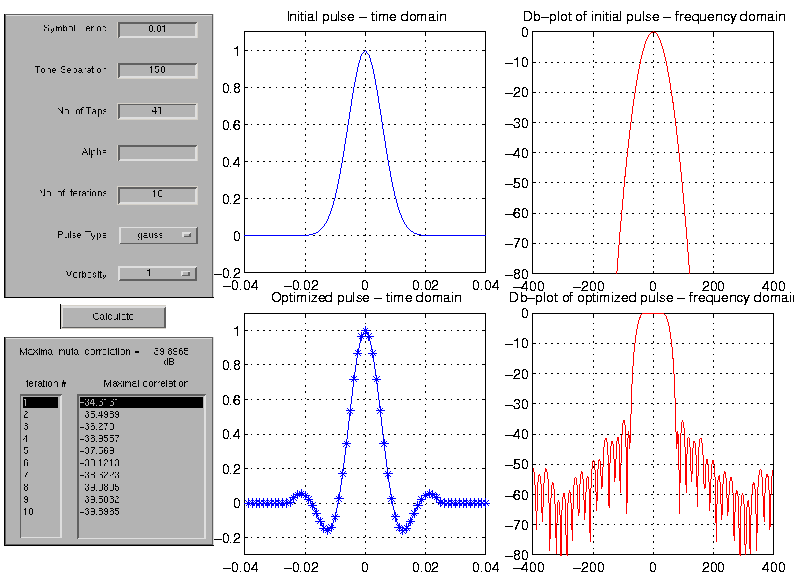Pulse shape design for OFDM
Pulse shape design in OFDM serves two (or more) purposes: one is
to reduce interchannel intereference caused by Doppler spread due to
mobile transmitter/receiver. The other is to reduce out-of-band leakage.
In both cases it is important to construct pulse-shapes that satisfy the following properties:
- the pulses are well-localized in time and frequency.
- the pulses are mutually orthonormal (this is not really necessary,
if done correctly, but minimizes amplification of AWGN)
- spectral efficiency is as large as possible
While the Balian-Low theorems puts limits as to optimizing all three
conditions there are efficient optimization algorithms (that can be
implemented in real-time) for the construction of pulses shapes that are
mutually orthogonal, have a prescribed number of taps, have fast spectral
decay and give the same spectral efficiency as cyclic prefix OFDM.
Clearly, the use of raised cosine pulses is only suboptimal (yet it is
funny that it is still frequently used in multicarrier systems) as the
pulses are not mutually orthogonal with respect to time and
frequency shifts.
I have developed a computationally efficient method for OFDM pulse shape
design that produces mutually orthogonal transmission pulses which
have a prescribed number of taps and show fast spectral decay.
This algorithm has been used successfully in modems for short-radio-wave
communications by Special Communication Systems .

An example of the MATLAB pulse shape software is illustrated below:



